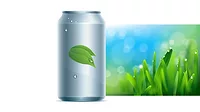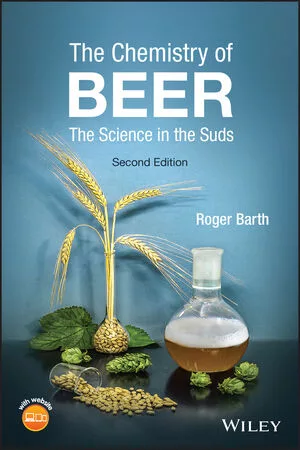Packaging Materials
Plastic packaging answers the call for sustainability
Post-consumer recycled plastic adopted by more beverage brands
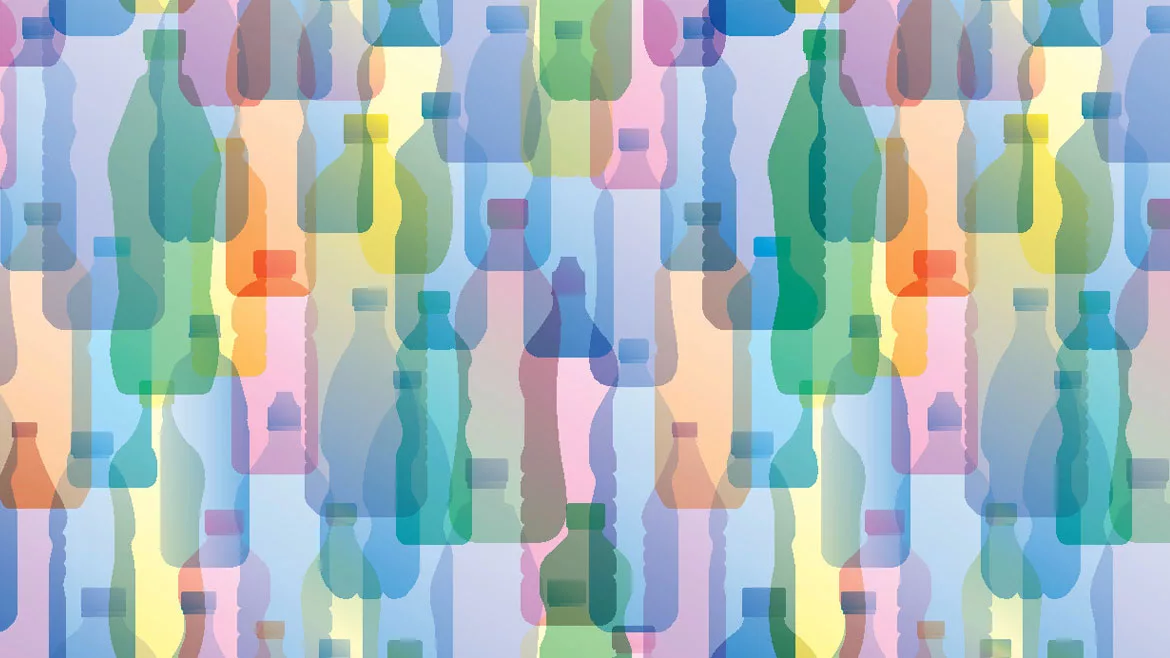
Image courtesy of Getty Images
In the 20th century, having led the nonviolent resistance campaign for India’s independence from British rule, Mahātmā Gandhi, who later inspired movements for civil rights and freedoms across the world, said: “Action expresses priorities.” Today, when it comes to the sustainability movement and beverage packaging, experts note that consumers are expressing their priorities for eco-friendly, plastic packaging through their purchasing decisions.
“Sustainability has grown in importance to shoppers with environmental concerns impacting purchase considerations as consumers are increasingly becoming aware of how their individual decisions affect the world around them,” says Chelsey Capps, director of Thought Leadership at Daymon, Stamford, Conn.
In fact, 41% of shoppers consider environmental and social impact when making food and beverage decisions, Capps says, citing a 2022 Hartman Group Study.
“Recyclability and concern for the environment is especially important to younger shoppers, driving retailers and brands to look for ways to increase their sustainability efforts and provide eco-friendly solutions,” she explains. “Private brand beverages have an opportunity to also strategize around sustainability, with Daymon Proprietary Research showing nearly 60% of private brand shoppers are interested in eco-friendly packaging.”
Michael Zuckerman, president of Zuckerman Honickman, a TricorBraun Company, King of Prussia, Pa., echoes similar sentiments, noting that regardless of the economy, consumers still want to buy products in sustainable packaging.
“More than eight in 10 consumers say it’s at least somewhat important for the food and beverage industry to be sustainable,” he says. “Interacting with single-use packaging and food waste on a daily basis likely means consumers are more sensitive to the environmental impact of this category.
“Products making ESG-related claims averaged 28% cumulative growth over the past five-year period, versus 20% for products that made no such claims,” he continues. “rPET aligns with consumers’ high interest in recycling. Seven in 10 U.S. adults would consider purchasing from a food and beverage brand that prioritizes sustainability, the highest share across industries.”
Investing in a circular economy
Although the beverage industry most certainly isn’t void of plastics, many brands in plastic packaging continue to succeed, experts note.
“Total carbon footprint, use of natural resources, chemicals used to produce, manufacturing pollution byproducts, recyclability, and the secondary repurchasing market capabilities are just a few staples of concern when trying to compare what types of beverage packaging is truly the best for the environment,” Daymon’s Capps says. “Deciding which material substrate to use for packaging depends on how each brand defines sustainability and what matters most to their shoppers.”
Zuckerman Honickman’s Zuckerman, notes that compared with glass and aluminum beverage containers, “PET plastic bottles create less solid waste, use less water during production and generate fewer emissions that contribute to acid rain and smog.”
“Plastic packaging made from PET is used in over 70% of beverage containers because it’s lightweight, clear and 100% recyclable,” Zuckerman says. “For the most recent data, a 2022 NAPCOR report documented the largest amount of postconsumer PET ever collected; bottle collection in the U.S. exceeded 1.9 billion pounds for the first time.
“NAPCOR also documented an overall increase in PET recycling rates with the U.S. rate at 28.6% (up from 27.1% in 2020) and the North American (U.S., Canada and Mexico) rate being 36.8% (up from 34.2% in 2020),” he continues.
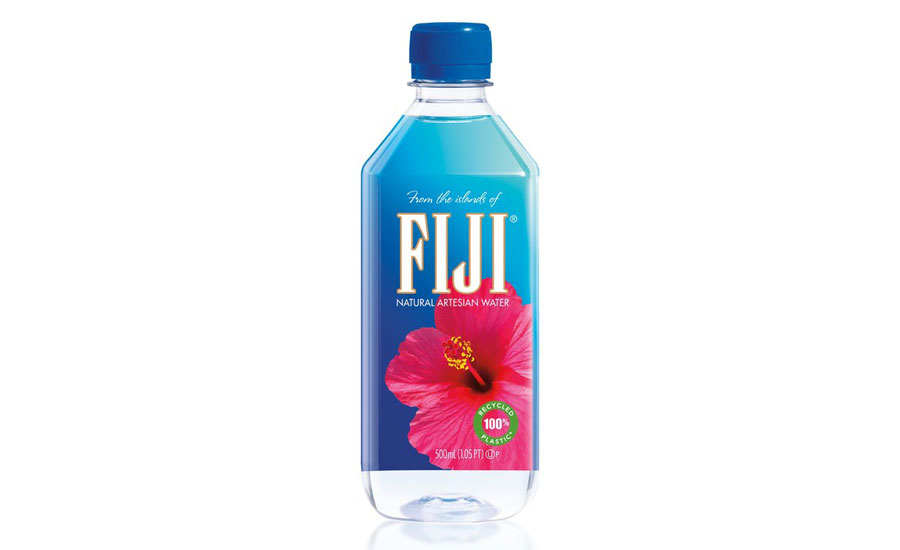
Image courtesy of FIJI Water
Jon Larson, head of product sales North America, Central America and Caribbean at Krones Inc., Franklin, Wis., notes that, today, brand owners aggressively are sourcing post-consumer recycled material (PCR) regardless of the price differences.
“This signals to the recycling industry that their investments are safe and then fuels innovation and employment of capital,” he explains. “Typically, the demand for PCR moves up or down based on the price of virgin resin.”
Zuckerman Honickman’s Zuckerman points to major brands increasingly transitioning to rPET bottles.
“All Pepsi-branded products in the U.S. are expected to be sold in 100% rPET bottles by 2030, with Pepsi Zero Sugar doing this in 2022,” he says. “PepsiCo’s pep+ program will cut virgin plastic per serving by 50% by 2030 globally and use 50% rPET in plastic packaging.
“Similarly, Nestle launched 100% rPET packaging across North America in 2018, and by 2020, it doubled the pack type’s usage by introducing rPET across its brands like Ozarka, Deer Park, and Zephyrhills — in line with the company’s aim of using 50% rPET across its domestic portfolio by 2025,” he continues.
Examples of brands having transitioned to 100% rPET include Core Hydration, VOSS, LIFEWTR, Snapple and Dasani, Zuckerman notes.
Major brands understand that consumers still want plastic bottles because of resealability and being lightweight, he says.
“They continue to innovate with new packaging formats designed to improve recyclability — increasing use of post-consumer recycled (PCR) content, as they approach their own sustainability commitments,” he adds.
Sustainability trends remain at the forefront
When it comes to plastic packaging, all trends come back to sustainability, experts note.
“What is trending is typically the industry reacting to attacks or demands of the consumer,” Krones’ Larson explains. “In some places we see legislation moving the needle, PCR requirements, preference for one plastic over another, or requirements to remove some plastics altogether.”
Daymon’s Capps notes that, although plastic as a substrate receives consumer push back from negative perception, brands are making headways with investments that shift to recycled plastics or rPET.
“Historically, the secondary recycled plastics market hasn’t been strong enough to support beverage businesses switching to the environmentally friendly option, due to its higher cost as compared to using virgin plastic,” she says. “Fortunately, consumer demand is shifting the tides in support of companies who choose to manufacture their products using recycled PET packaging.
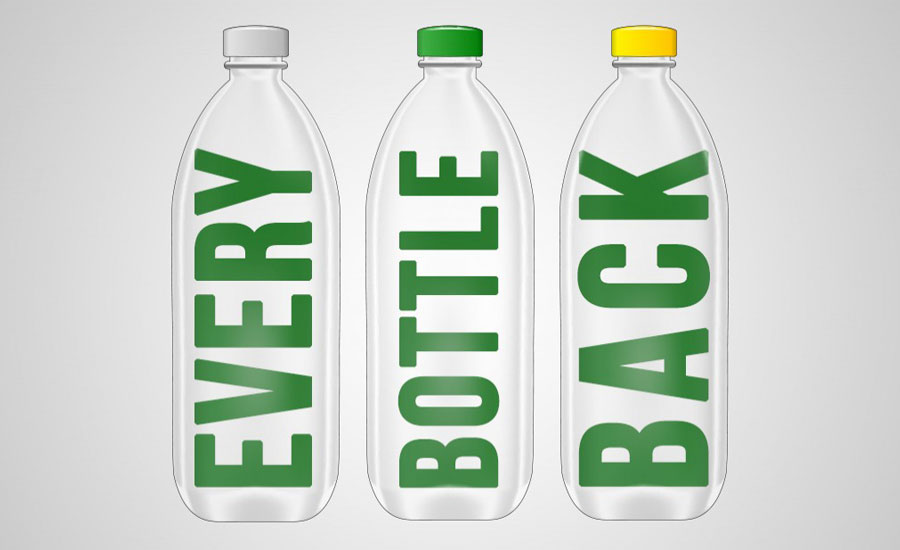
Image courtesy of American Beverage Association
“The stronger the rPET market gets, the less plastic goes into landfills, and the more beneficial it is to both the total industry and the earth,” Capps continues.
Zuckerman Honickman’s Zuckerman points to America’s leading beverage companies working together to reduce the industry’s plastic footprint through the Every Bottle Back initiative. Additionally, with legislation enacted to support a circular economy, more brands are incorporating PCR — leading to lower greenhouse gas emissions, he says.
With increasing state minimum recycled content requirements, we can expect an increasing number of brands incorporating PCR, enabling a circular economy, Zuckerman explains.
“Five states have enacted these mandates, with as many as 11 considering legislation,” he says. “All have different timelines and different percentage requirements, making the need for increased PCR a have-to-have for brands.”
Beverage trends influencing the market
Since the onslaught of the pandemic, as consumer needs have evolved, today’s consumers are looking for beverages that serve specific functions, experts note.
“In this inflationary environment, we are seeing growth in multipacks as consumers opt for value,” Zuckerman Honickman’s Zuckerman notes.
Further, with consumers prioritizing convenience, PET is an ideal package type for eCommerce, as it is sustainable, shatterproof and lightweight, he says.
“The pandemic has heightened focus on eCommerce, especially in the grocery industry. Online grocery sales in the U.S. will grow at a compound annual rate of 11.7% during the next five years,” Zuckerman notes, citing 2023 Brick Meets Click/Mercatus Five Year Grocery Sales Forecast.
Moreover, with consumer desire for functionality and convenience, Zuckerman points to more consumers turning to functional beverage shots, creating an opportunity in the energy shots space.
“[Functional beverage shots] often highlight the intended purpose and functionality of the product whether it’s immunity booster or probiotics,” he explains. “Now, consumers are opting for small-sized functional shots for convenience.
“It is a niche category. However, it appeals to health conscious, higher income consumers,” Zuckerman continues. “Sustainable packaging claims are a near must for the category as these products generally appeal to high income consumers.”
Krones’ Larson also points to functional beverages moving toward PET containers.
“Sensitive beverages such as dairy, juices, isotonics that are still in glass or hot fill containers are migrating into aseptically filled PET containers,” he says.
With the proliferation of beverages addressing consumers’ various needs, Zuckerman notes that certain categories are expected to witness strong growth in the future.
“As more brands address consumer desired needs, such as immunity, gut health, energy, hydration, etc., certain categories such as enhanced waters (6.6% CAGR ’22-’26), [and] sports drinks (3.4% [CAGR] ’22-’26) are forecasted to have strong growth rates driven by functional offerings,” Zuckerman says. “Several of these beverages considered high-acid (pH level [greater than] 4.5) and mostly filled in hot fill (e.g., sports drinks, juices, RTD tea, and enhanced waters) today impact the use of plastic packaging.”
Krones’ Larson points to innovation with the functional aspects of the container.
“Tethered caps, label-less bottles via direct printing are just a couple of the things that we’ll see in the near future,” he says.
Eyes on a bright future
As brands continue to increase their use of PCR, experts note that new innovative packaging formats can only further help meet their sustainability goals and commitments.
“PET is the most recycled plastic in the world, with more than 1.5 billion pounds of used PET bottles and containers recovered in the U.S. each year alone,” Zuckerman Honickman’s Zuckerman says. “Continued light weighting advancements will continue to lower the environmental impact of a PET bottle.”
Krones’ Larson points to the considerable amount of capital allocated to recover and process plastics that have traditionally had little to no second life in a beverage package.
“Besides the traditional packaging producers, the petrochemical and resin manufacturers are adapting or creating new processes to produce new PCR products,” he says. “Plastic packaging is still the best vehicle to deliver products safely to the consumer. They’re shatter proof, lightweight and easily adapted for many uses.
“When we consider using high percentages of PCR the carbon footprint is better than carton, glass, and aluminum,” Larson concludes.
Looking for a reprint of this article?
From high-res PDFs to custom plaques, order your copy today!





